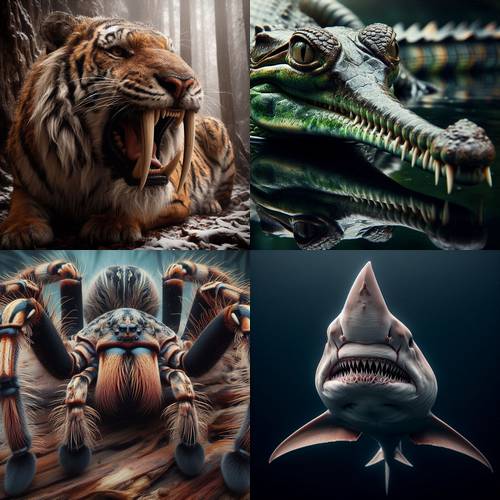Goliath Bird-Eating Spider

The Goliath Bird-Eating Spider is an impressive arachnid, known for its size and predatory capabilities. It can have a leg span of up to 12 inches, making it one of the largest spiders in the world. Despite its name, it primarily feeds on insects and small vertebrates. Females can weigh over 6 ounces, adding to their intimidating presence in the animal kingdom.
Gharial
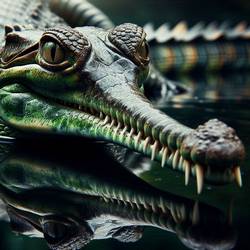
The Gharial, a critically endangered crocodilian species, can reach impressive lengths of up to 20 feet (6 meters). With a slender snout lined with around 110 sharp teeth, they primarily feed on fish. Adult males can weigh between 350 to 550 pounds (160 to 250 kilograms), making them one of the largest crocodile species. Their unique appearance and habitat make them a symbol of conservation efforts in South Asia.
Goblin Shark
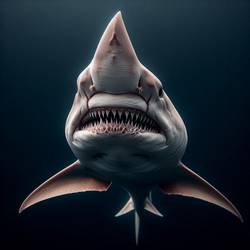
The Goblin Shark, known for its unique appearance, can grow up to 10-13 feet in length and weigh around 330-440 pounds. Its most distinctive feature is its elongated, flattened snout and retractable jaws filled with needle-like teeth. Found in deep-sea habitats worldwide, these sharks are rarely seen by humans due to their preference for deep waters, making them one of the most mysterious and fascinating shark species.
Giant Japanese Hornet

The Giant Japanese Hornet is a formidable insect, measuring up to 2 inches in length and weighing around 2 grams. Known for its aggressive behavior and potent sting, it can inject venom that can be lethal to humans. With a wingspan of about 3 inches, these hornets are skilled predators capable of decimating entire beehives in a short time, making them a feared presence in Japan's countryside.
Saber-Toothed Tiger

The Saber-Toothed Tiger, also known as Smilodon, lived during the Pleistocene epoch and is famous for its long, curved canine teeth that could grow up to 11 inches in length. This apex predator stood about 3 feet tall at the shoulder and weighed around 440 to 660 pounds, making it one of the largest and most formidable carnivores of its time.
Komodo Dragon
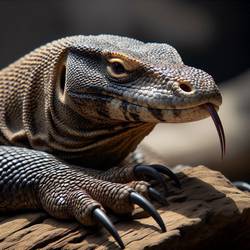
The Komodo dragon, the world's largest lizard, can grow up to 10 feet long and weigh around 200 pounds. With a lifespan of up to 30 years, these formidable predators possess sharp claws, powerful jaws, and a venomous bite capable of incapacitating prey. Found primarily in the Indonesian islands, they are known for their aggressive behavior and hunting prowess, making them a symbol of fear and fascination in the animal kingdom.
Black Mamba
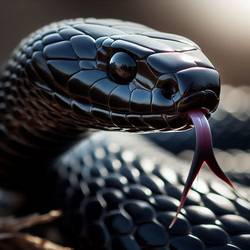
The Black Mamba is a fearsome snake known for its deadly venom and impressive physical attributes. It can reach lengths of up to 14 feet (4.3 meters) and weigh around 3.5 pounds (1.6 kilograms). With speeds of up to 12 miles per hour (19 kilometers per hour), this agile serpent is one of the fastest land snakes, making it a formidable predator in its African habitat.
Spitting Cobra
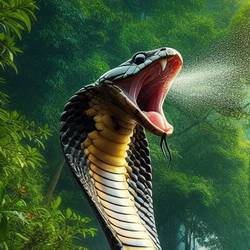
The Spitting Cobra, known for its venomous spit, can reach lengths of 4 to 7 feet and weigh between 2 to 4 pounds. Its venom can travel up to 6 feet, delivering a potent defense mechanism against threats. This species' ability to accurately project venom adds to its intimidating presence in the wild, making it a formidable predator and a symbol of fear in its habitat.
Great White Shark
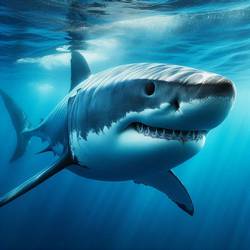
The Great White Shark, known as one of the ocean's apex predators, can reach lengths of up to 20 feet and weigh over 5,000 pounds. With razor-sharp teeth and powerful swimming abilities, these magnificent creatures command respect and fascination. They are capable of bursts of speed up to 25 miles per hour, making them formidable hunters in their marine environment.
Lion's Mane Jellyfish

The Lion's Mane Jellyfish is a majestic marine creature known for its impressive size and striking appearance. With tentacles reaching lengths of up to 120 feet, it holds the record as one of the largest jellyfish species. These jellyfish can weigh over 440 pounds, making them a formidable presence in the ocean. Despite their size, they move gracefully through the water, capturing prey with their stinging tentacles.
